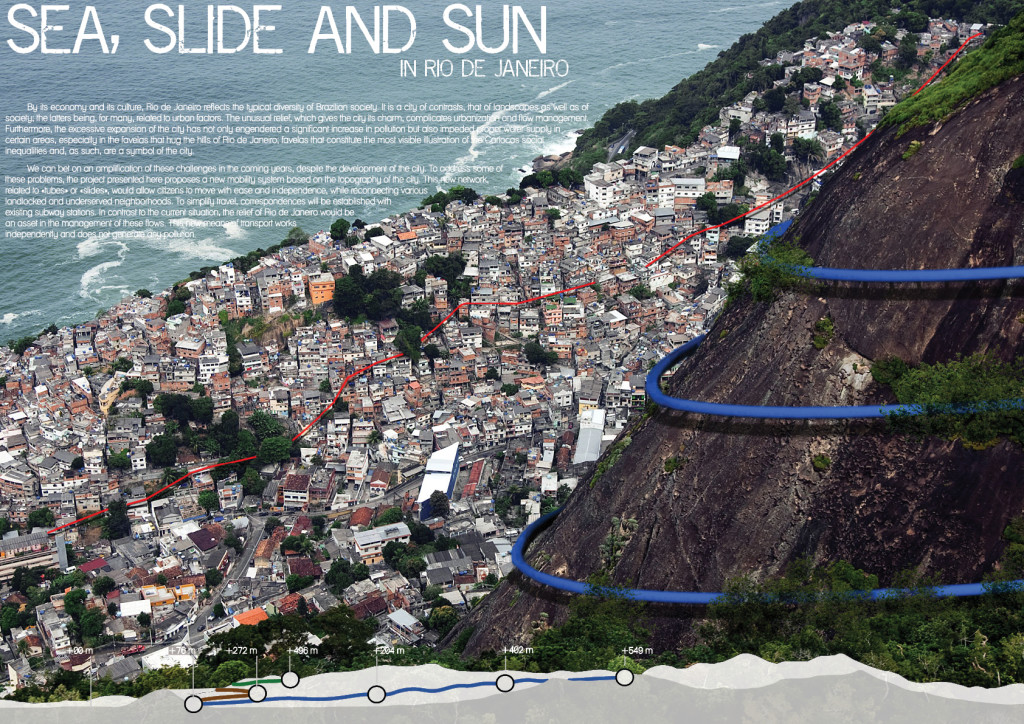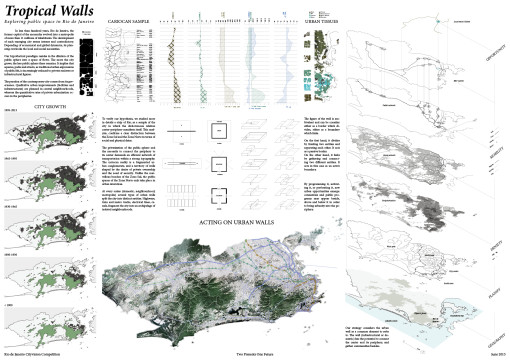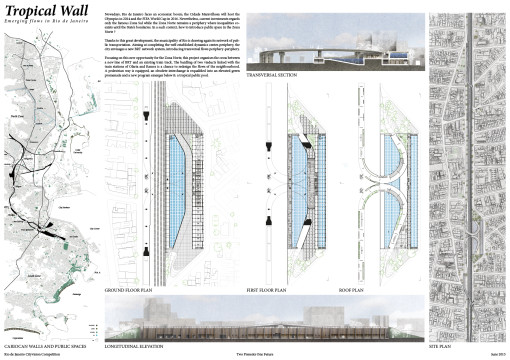Info:
Title: Tropical Wall(s). Exploring public space in Rio de Janeiro. - Code: 0c2e9Contest: Rio de Janeiro / 2013
By: Martin Lepoutre - Augustin Clément
Views: 5387 Likes: 0
Votes:
Alejandro Zaera-Polo 9 Jeffrey Inaba 5 Jeroen Koolhaas 3 Hernan Diaz Alonso 1 Cristiano Toraldo di Francia 7 Pedro Rivera 75.3
Tropical Wall(s). Exploring public space in Rio de Janeiro.
This project presents 2 chapters. The first one is an analysis of Rio de Janeiro, a paradigm on the contemporary city and an urban strategy. The second is a direct application leading to an architectural project. Chapter I: Tropical Walls. Exploring public space in Rio de Janeiro. The development of the emerging city is intense and contradictory. Depending of economical and global dynamics, its planning overlooks the local and social necessities. Nowadays, Rio de Janeiro faces an economic boom; the Cidade Maravilhosa will host the Olympics in 2014 and the World Cup in 2016. Nevertheless, current investments regard only the Zona Sul while the Zona Norte remains a periphery where inequalities coexist between walls. Our hypothetical paradigm resides in the dilution of the public sphere: the more the city grows, the less public sphere remains. It implies that squares, parks and streets, traditional urban expressions of public life, are reduced to private enclaves or infrastructural figures. This paradox comes from the city’s governance: qualitative urban improvements are planned in central neighbourhoods, whereas private urbanization occurs in the peripheries. By studying a strip of Rio as a sample, we verify a dichotomous relation center-periphery in terms of social and physical datas. The cariocan reality is a territory of walls shaped by the desire of private ownership and the need of security. At every scales, several types of urban walls as highways, train and metro tracks, electrical lines or canals fragment the city into an archipelago of isolated barrios. Unlike the marvellous beaches of the Zona Sul, the public spaces of the Zona Norte only take place in urban interstices. In a such context, how to introduce public space in the Zona Norte ? Our strategy refers to the urban wall as the common element. It is an ambivalent element which can be consider either as a border which divides, either as a boundary which links. By programming it or activating it, new urban opportunities emerge: connexions and public programs appear in order to bring urbanity into the periphery. The wall – infrastructural and domestic – has the potential to link the center and its periphery as well as gather communities. Chapter II: Tropical Wall. Emerging flows in Rio de Janeiro. Thanks to its great development, the municipality of Rio is drawing again its network of public transportation. Aiming at completing the well established dynamics center-periphery, the city envisages a new BRT network system, introducing transversal flows periphery-periphery. Focusing on this new opportunity for the Zona Norte, this project organises the cross between a new line of BRT and an existing train track. The buidling of two viaducts linked with the train stations of Olaria and Ramos is a chance to redesign the flows of the neighbourhood. An obsolete interchange is requalified into an elevated green promenade and a new program emerges below it: a tropical public pool.
Related Posts :
Comments:
Info:
Title: Tropical Wall(s). Exploring public space in Rio de Janeiro.
Time: 4 agosto 2013
Category: Rio de Janeiro
Views: 5387 Likes: 0
Tags: -








